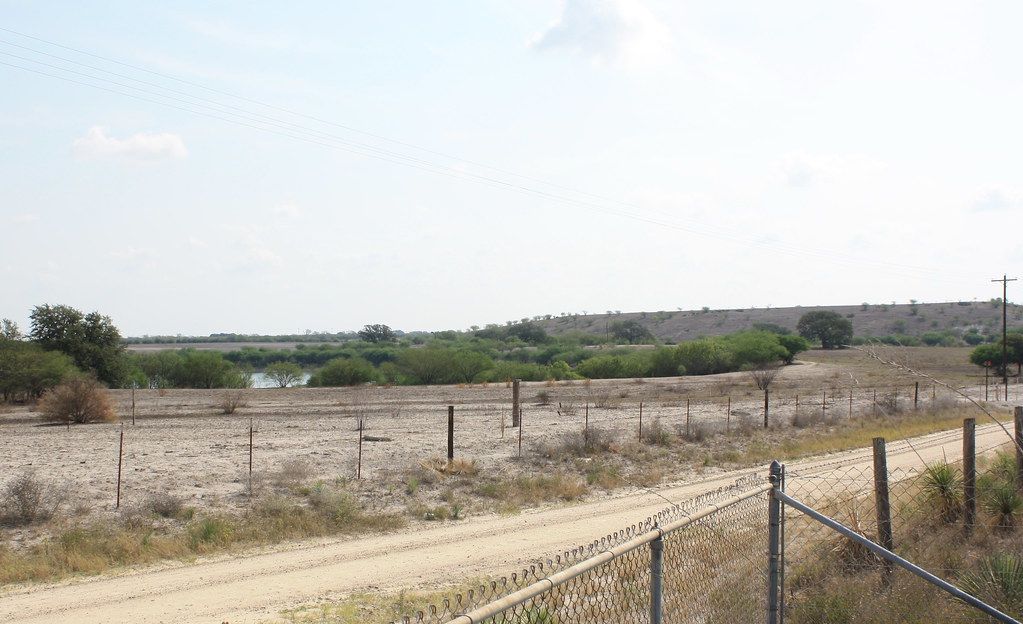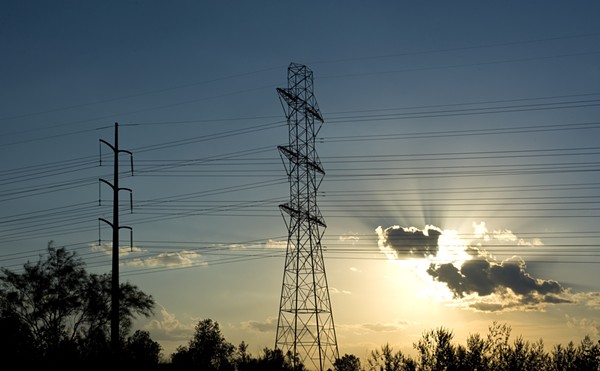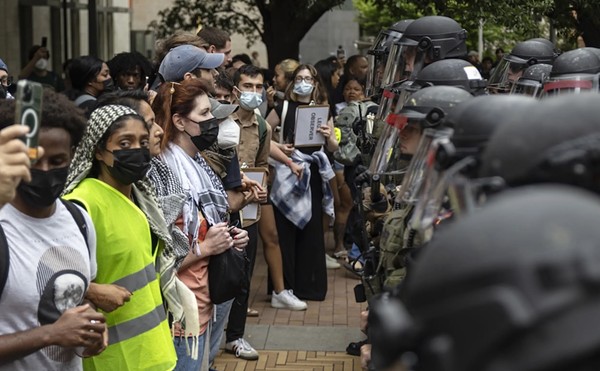
Greg Harman
“Prepare to meet thy God,” reads the small black-and-white sign in the yard at the end of this dusty county road in Karnes County. I'm looking for a string of open-pit uranium mines, now filled with water, where some locals fish, swim, and practice their water skiing.
A San Antonio mechanic and Karnes County resident lost his 30-some acre lake (and former uranium mine) last year when the Texas Railroad Commission pumped out more than 122 million gallons, transferred about 70 foot-long big mouth bass to a nearby stock tank, and left him with a dry graded pit.
“They left me with what's going to end up being a pretty good pond â?? if it ever rains.”
There are plenty of these former uranium mines sitting on private ranches across South Texas. The RRC insists they don't have responsibility for them since they were dug and abandoned prior to passage of a 1970s federal mining law that first required companies to post bonds up front to guarantee later cleanup.
Using federal monies as they have become available, the state has led and completed 15 mine reclamations, leaving 17 former uranium mining sites still unaddressed, according to Ramona Nye, spokesperson for the agency.
I was stunned to hear from a former Karnes County resident who spoke about learning to water ski on one of the water-filled pits pictured below on Google Maps. (So far, just one tumor, he said.)
Mining, milling, and dumping of uranium across South Texas has fouled numerous aquifers, and some claim the tailings continue to cause a health hazards by allowing alpha radiation to blow freely on the breeze.
While open-pit uranium mining in Texas dates back to the 1950s, past abuses continue to pose a risk to the living. Waste pits like these in South Texas will remain toxic for hundreds of thousands of years, even as a new generation of mines prepares to move into production.
All these companies require is an uptick in the global economy and a commitment by utilities such as CPS Energy, owned by the City of San Antonio, to give nuclear power another go.
The mining technology preferred today, in-situ mining, utilizes an assortment of injection and extraction wells which force the uranium into the water column where it can be pumped to the surface and separated out.
The method is cheaper than open-pit and less visually damaging. Problem here is ever getting this water clean again. There have been problems with pollution the world over.
Also, in-situ uses a lot of water. Uranium Resource's Kingsville Dome mine at Ricardo (operating on a skeleton crew due to the economic downturn), was buying more than a million gallons of water per month from the local water district last summer.
While my Karnes County source tells me the water in his lake wasn't dangerous (“We had it tested 25 years ago,” he says during a telephone interview. “We didn't want to pump poison on our crops.”), there is a nearby “lake” that has tested higher for toxics. It's only been sitting contaminated for decades, a short distance from a string of now infamous radioactive dumps outside Falls City and Panna Maria.
As the San Antonio City Council prepares to vote on whether to participate in the expansion of the South Texas Project nuclear complex outside Bay City, there has been very little discussion of the environmental and public health consequences of nuclear power â?? from the full impact of mining to the ethical questions surrounding our right to create radioactive poisons in the first place, wastes that will remain toxic to biological lifeforms for hundreds of thousands and even millions of years.
The San Antonio City Council vote in October is significant. As the proposed doubling of the South Texas Project nuclear complex represents the first new construction application filed in almost 30 years, it is also the top-ranked project in line for guaranteed federal loan subsidies from the U.S. Department of Energy.
With a nod to nukes, the San Antonio City Council will be offering the uranium market its encouragement and may help ease the return of uranium mining activity across the region. And it gives steam to other nuclear power projects to come.
Prior to the vote, San Antonio must be able to answer a number of questions. With regards to mining, we must ask if people are still suffering from past mining mistakes and if current mining practices are safe for our limited groundwater resources and communities.
These are the sorts of things we'll be asking at the Current over the next month. You can participate in this conversation by following our updates at Queblog and by following our weekly coverage, set to launch September 16.
Nuclear power in San Antonio is truly an "outsourced power source." The risk of meltdown is most acute for those living 200 miles to the southeast; the damages of uranium mining are the dominion our southern neighbors; and those who must confront the potential damages from waste disposal live another several hundred more miles to the northwest.
For that reason, it's easy to see how our leaders would overlook or undervalue these concerns. But from a historical perspective it does not make it pardonable.
Ultimately, our hope is that the observations we offer will contribute to a sound decision on one of the most pressing issues of our time. What cost energy?


















